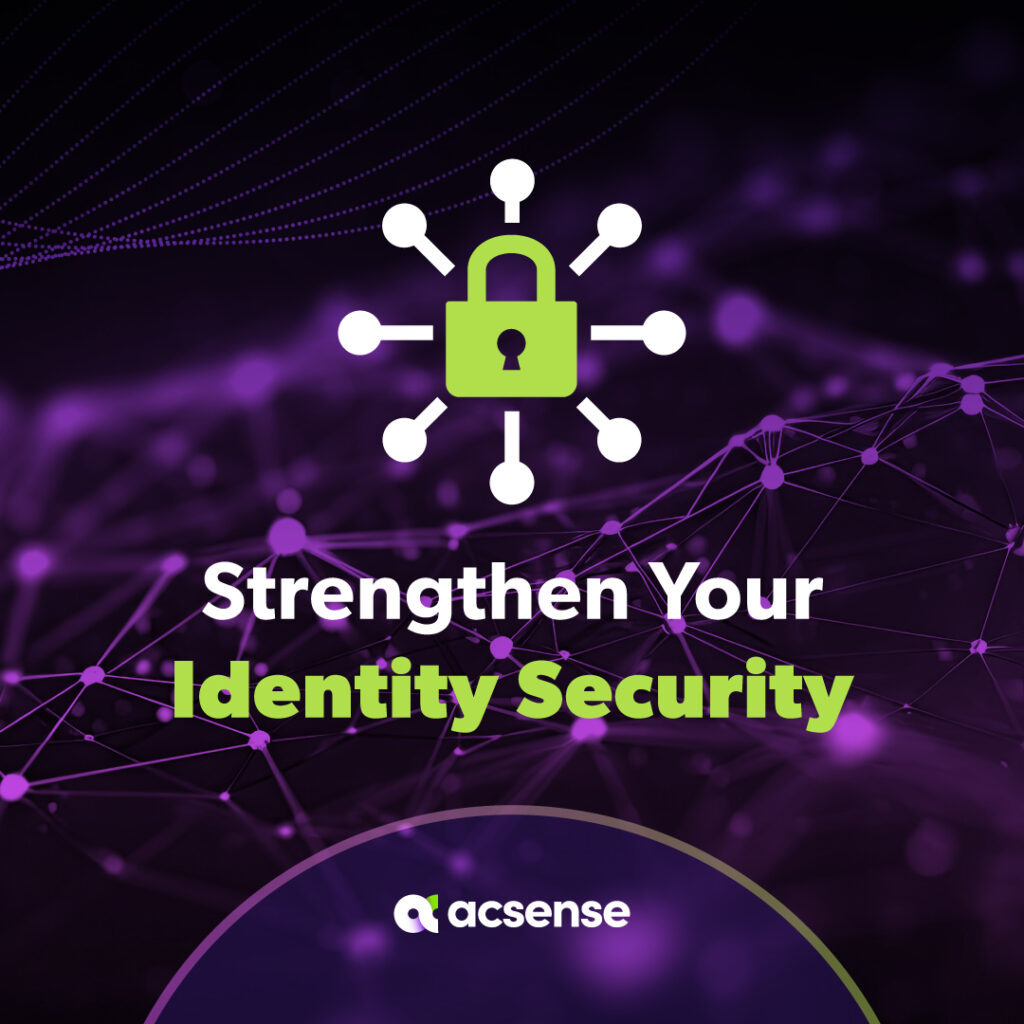Identity Fabric: What You Need to Know
Identity Management in Modern Enterprise
As organizations expand their digital operations across multiple cloud environments and on-premises systems, managing user identities has become increasingly complex. This guide explains Identity Fabric – a modern approach to managing identities across distributed systems – and how it helps organizations maintain security while enabling seamless access for users.
As businesses expand across cloud environments, they face complex challenges. Understanding identity fabric is key to overcoming these challenges, providing an agile approach to managing identities. With escalating cyber threats, a robust access management framework is imperative. We explore the concept of Identity Fabric, its transformative impact on identity management and identity solutions, the benefits of adopting it, its relationship with Zero-Trust Architecture, and its role in fortifying infrastructure against vulnerabilities.
What is Identity Fabric?
What is Identity Fabric?
Identity Fabric is an architectural approach to identity management that:
- Creates a unified layer for managing identities across multiple systems and platforms
- Enables consistent policy enforcement across cloud and on-premises applications
- Provides automated integration with various identity providers and authentication services
- Centralizes access control while maintaining distributed execution
- Supports modern authentication standards and protocols
Environments
Multi-cloud brings benefits like flexibility, scalability, and redundancy, but it also poses identity management challenges. Legacy applications struggle to function in complex multi-cloud environments, requiring manual recoding and risking security. Orchestration of independent identity systems leads to fragmented landscapes. Interoperability is crucial for secure multi-cloud setups.
Identity Fabric provides a solution by unifying multiple systems, centralizing management, and enhancing security.
It establishes standards and protocols, promoting interoperability for seamless identity exchange and authentication in multi-cloud settings.
Identity fragmentation
Multi-cloud organizations face identity fragmentation.
Different IAM systems across cloud environments create silos, manual tasks, inefficiencies, and security risks. Modernizing identity infrastructure supports cloud-native designs and operations. Identity fabric solutions tackle fragmentation, ensuring consistent identity and access policy management. It acts as an abstraction layer, bringing together distributed identity providers and authentication mechanisms.
Vendor lock-in
In IAM, vendor lock-in concerns IT leaders when organizations rely on specific identity platforms, hindering transitions to modern systems that meet business requirements and compliance standards. Outdated legacy systems use cookie sessions, restricting migration to the cloud. Avoiding this requires considering swapping legacy systems, but this incurs high costs and delays. Shifting to an alternative cloud platform may not guarantee a long-term solution.
Businesses must assess the implications before moving away from their current identity system infrastructure.
Cost inefficiencies
In the realm of digital identity management, the term “Identity Fabrics” has emerged as a transformative concept.
It directly addresses the challenges of legacy systems, which are notorious for their resource-intensive nature both in maintenance and scaling to accommodate new users and applications.
Identity Fabric Reduces Costs Through:
1. Automated Integration: Replaces manual coding with pre-built connectors and APIs
2. Centralized Management: One console to manage all identity-related tasks
3. Reduced Maintenance: Fewer systems to maintain and update
4. Simplified Compliance: Automated reporting and audit trails
5. Faster Deployment: Ready-to-use components instead of custom development
By tackling these areas, Identity Fabrics offer an effective solution to the cost inefficiencies that plague traditional identity management systems.
Slow identity projects
Slow identity projects hinder organizational growth and efficiency.
Identity Fabric revolutionizes project implementation, reducing timelines by 75% through automation and streamlining. Zero-code deployments simplify customizations and integrations, reducing time-to-market. The framework eliminates legacy systems and reduces the workload for IT staff.
What is the Difference Between Identity Fabric and Zero Trust?
Identity Fabrics and Zero Trust are both important concepts in identity and access management, but they have different focuses.
Identity Fabric provides the infrastructure needed to implement Zero Trust principles effectively:
1. Continuous identity verification across all access points
2. Consistent policy enforcement regardless of location
3. Real-time monitoring and logging of all identity-related activities
4. Automated response to suspicious access attempts
5. Granular access control based on user context and behavior
Relationship between Identity Fabric and Zero-Trust Architecture
The relationship between Identity Fabric and Zero-Trust Architecture represents a symbiotic alignment in the sphere of cybersecurity. As organizations navigate the waters of digital transformation and the expansion of remote workforces, they turn to Identity Fabric to forge a robust, multifactor foundation for identity assurance and access management.
This foundational aspect holds significant weight within a Zero Trust framework, which operates on the principal ethos of “never trust, always verify,” and thus demands a heavy focus on stringent identity verification for each entity—be it user or device—in the network.
Identity Fabric and Zero Trust Synergy
Zero Trust Principle | Identity Fabric Contribution |
|---|---|
Least Privilege Access | Ensures only necessary access is granted, mitigating the potential for unauthorized movement within the network. |
Continuous Authentication | Provides ongoing verification processes, proving identities of users and devices are legitimate throughout the session. |
Verify Before Trust | Acts as a guard, assessing access requests ensuring they meet predetermined security protocols before granting resources. |
In practice, Identity Fabric weaves a continuous authentication and authorization process that fulfills the very requirements that a Zero Trust Model upholds.
Together, they represent a comprehensive approach to identity and access management that is essential in managing identities at scale, ensuring compliance, and bolstering the security posture of complex IT ecosystems.
Protecting Infrastructure with Identity Management Security
In today’s digital landscape, protecting an organization’s IT infrastructure is crucial for business continuity and growth. A robust identity management system is a key component of this protection.
This is achieved through three core security principles:
- Zero Trust Validation – This means continuously verifying every user and system access attempt, regardless of location or previous authentication status.
- Least Privilege Access – Users are given only the minimum permissions needed to perform their job functions, reducing potential security risks.
- Multi-Factor Authentication (MFA) – Adding multiple layers of verification beyond passwords, such as biometrics or security tokens.
The term “identity fabric immunity” used in the original text isn’t a standard industry term and could be misleading. Instead, we should focus on how these security principles work together to create a resilient identity management system.
How These Security Principles Work Together
A comprehensive identity management security approach combines centralized control with distributed implementation.
This means:
- All access points are monitored and logged from a central location
- Authentication checks happen at multiple points throughout the system
- Access controls are consistently enforced across all applications and services
- Security policies are uniformly applied regardless of where users access the system from
To succinctly illustrate these aspects, consider the following table:
Principle of Identity Fabric Immunity | Description | Benefit |
|---|---|---|
Decentralized Nature | Spreads identity management across the network, avoiding central points of failure. | Increases the overall resilience of the identity infrastructure. |
Zero Trust | Requires continuous verification of user identity and privileges. | Helps prevent unauthorized access and secures sensitive information. |
Least Privilege | Access is restricted to the minimum necessary for users to perform their duties. | Reduces the attack surface and potential for internal vulnerabilities. |
Multi-Factor Authentication (MFA) | Adds multiple layers of authentication to verify user identity. | Enhances security by reducing the risk of compromised credentials. |
By integrating these principles, organizations can weave a security tapestry that’s robust and adaptive, allowing them to respond to evolving threats with agility and precision while minimizing their attack surface.
This orchestrated effort is what constitutes the operational essence of identity fabric immunity, providing a sustainable blueprint for secure identity and access management in the digital age.
What Is the Relationship Between Identity Fabric and Identity Orchestration?
Identity orchestration and fabric work together for effective identity and access management.
Orchestration coordinates identity-related activities like provisioning and authentication. Fabric provides the infrastructure for seamless integration between different identity management components. It serves as the foundation for orchestration, allowing organizations to implement and manage it effectively.
Implementing fabric creates an integrated identity management ecosystem for better visibility, control, and management of user identities and security.

The Future of Identity Fabric and its Role in Identity Security
As technology continues to advance and the complexities of managing digital identities grow, the future of identity fabric holds great promise in enhancing identity security.
Here are some key trends to consider:
Artificial Intelligence (AI) for Adaptive Security:
AI plays a pivotal role in analyzing behavioral patterns and anomalies in real-time. By integrating AI into identity fabric, organizations can proactively detect suspicious activities—such as unusual login attempts or unauthorized access—while automating threat responses for enhanced security.Blockchain for Immutable Identity Data:
Blockchain technology offers a secure, tamper-proof method for storing and verifying user identities. When integrated into identity fabric, it can reduce fraud by ensuring that identity data cannot be altered, while enabling decentralized identity solutions.Empowering Users with Self-Sovereign Identity:
The future of identity fabric emphasizes user control. Self-sovereign identity frameworks will allow individuals to own and manage their identity data directly, granting or revoking access as needed. This approach strengthens privacy while building trust between users and organizations.Dynamic, Contextual Access Control:
By incorporating contextual signals like location, device type, and time of access, identity fabric can enable risk-based authentication and authorization. This ensures that access decisions are not static but adapt dynamically based on situational risk.
Benefits of Implementing Identity Fabric for Identity Protection and Resilience
Implementing an identity fabric in your organization offers numerous benefits for identity protection:
1. Unified Identity Governance Across Systems
Identity fabric provides a cohesive layer that connects and standardizes IAM policies across cloud, on-premises, and hybrid systems. This eliminates inconsistencies in how identities are managed, ensuring a unified approach to security and governance across your entire digital ecosystem.
2. Seamless Access Across Fragmented Environments
Unlike traditional IAM systems, which often focus on single environments, identity fabric enables secure and seamless Single-Sign-On (SSO) across diverse platforms, applications, and clouds. This ensures users experience frictionless access, even in environments with multiple identity providers.
3. Orchestration for Identity Lifecycle Management
By integrating siloed identity systems, identity fabric automates the provisioning and deprovisioning of accounts across all connected platforms. This ensures that access rights are synchronized in real time, reducing the risks associated with delayed account updates.
4. Holistic Compliance and Reporting
Identity fabric simplifies compliance by unifying access controls and audit trails across all systems. Organizations can generate comprehensive reports that cover all applications and environments, streamlining adherence to regulations like GDPR, CCPA, and HIPAA.
Implementing Identity Fabric: Key Steps
For organizations ready to adopt Identity Fabric, follow these four phases of implementation:
1. Assessment
- Audit current identity management systems
- Document integration requirements
- Identify security gaps
2. Planning
- Define architecture requirements
- Create migration strategy
- Establish success metrics
3. Deployment
- Implement core identity services
- Configure authentication methods
- Set up monitoring and logging
4. Optimization
- Fine-tune access policies
- Automate routine tasks
- Monitor performance metrics
Enhance Your Identity Fabric Strategy with Acsense
Acsense complements your Identity Fabric by providing advanced IAM resilience solutions that seamlessly integrate with your existing systems. Our platform ensures continuous backups, one-click recovery, simplified investigation, tenant-level replication, and compliance at scale, enhancing the security and efficiency of your identity infrastructure.
Take the Next Step with Acsense
Are you ready to strengthen your Identity Fabric and safeguard your organization from cyber threats?
Reach out to Acsense today to discover how our solutions can elevate your identity management strategy and operational resilience.
